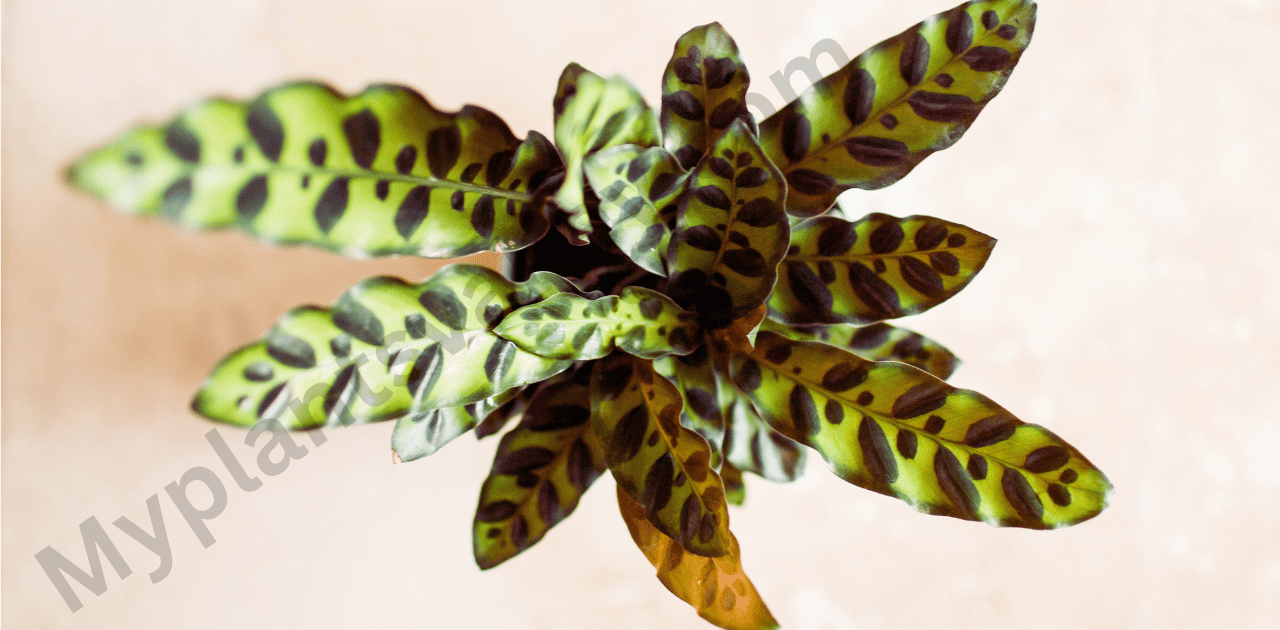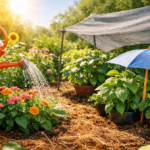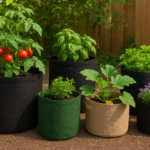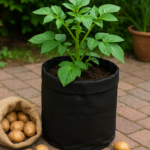Calathea plants, known for their vibrant and intricately patterned leaves, have become a popular choice for indoor gardeners. Originating from the tropical regions of the Americas, these plants thrive in environments that mimic their natural habitat. But how do you ensure your Calathea remains healthy and vibrant in your home?
Caring for a Calathea can be a rewarding yet challenging experience, as these plants have specific needs that must be met to maintain their stunning appearance. From providing the right amount of light and humidity to ensuring proper watering and feeding, each aspect of Calathea care plays a crucial role in its overall health. Whether you are a seasoned plant parent or a beginner looking to add a touch of the tropics to your indoor space, understanding the essentials of Calathea care is key to keeping your plant thriving.
About Calathea Plants

Calathea plants, often referred to as “prayer plants,” are cherished for their stunning, colorful foliage and unique leaf movements. Native to the tropical regions of South and Central America, these plants thrive in the warm, humid understory of rainforests. Calatheas are part of the Marantaceae family, which includes a variety of species, each with its distinctive leaf patterns and colors. Popular varieties include Calathea Orbifolia, Calathea Medallion, and Calathea Lancifolia.
The leaves of Calathea plants display intricate designs, ranging from stripes and spots to waves and vibrant shades of green, purple, and pink. One fascinating feature of Calathea plants is their nyctinastic movements—the leaves fold up at night and unfurl in the morning, resembling hands in prayer, hence the nickname.
Origin and Natural Habitat
Calathea plants, native to the tropical regions of South and Central America, thrive in the warm, humid understory of rainforests. These lush environments provide the ideal conditions for Calatheas, with consistent moisture, diffused light, and high humidity. Growing beneath the forest canopy, Calatheas have adapted to low-light conditions, making them well-suited for indoor cultivation where direct sunlight is often limited. Their natural habitat also explains their preference for high humidity, mimicking their origins’ damp, shaded forest floor.
Different Varieties of Calathea
The Calathea genus encompasses a wide array of species, each boasting its unique leaf patterns and colors. Here are some popular varieties:
- Calathea Orbifolia: Known for its large, round leaves with silver-green stripes, this variety adds a touch of elegance to any space.
- Calathea Medallion: Featuring broad, dark green leaves with purple undersides and intricate patterns, the Medallion is a striking choice for plant enthusiasts.
- Calathea Lancifolia (Rattlesnake Plant): This variety has long, narrow leaves with wavy edges and a unique, spotted pattern, resembling the markings of a rattlesnake.
- Calathea Roseopicta (Dottie): Dottie’s leaves are dark green with a deep pink outline and central vein, creating a dramatic and colorful display.
- Calathea Rufibarba (Furry Feather): Known for its velvety leaves with a feather-like texture, this variety adds a soft, tactile element to your plant collection.
- Calathea Majestica: Calathea majestica, also known as Calathea ‘Majestica’ or Calathea ‘Makoyana’, is a striking variety of Calathea prized for its bold and vibrant foliage. This plant is characterized by large, oval-shaped leaves with intricate patterns of silver and green on the upper surface, while the undersides are a rich purple color.
Read our post to know more:Calathea Majestica White Star Care Guide in 2023
Why Choose Calathea as an indoor plant?

Choosing Calathea as an indoor plant offers a multitude of benefits, making it an excellent addition to any home. Here are some compelling reasons to consider Calathea for your indoor garden:
- Striking Aesthetic Appeal: Calathea plants are renowned for their vibrant and intricately patterned leaves, which come in a variety of colors and designs. From bold stripes to delicate spots, their foliage can brighten up any room and serve as a stunning focal point.
- Air Purification: Like many indoor plants, Calathea helps purify the air by removing toxins. This contributes to a healthier indoor environment, improving air quality and promoting overall well-being.
- Non-Toxic to Pets and Children: Calathea plants are non-toxic, making them a safe choice for homes with pets and young children. You can enjoy the beauty of these plants without worrying about harmful effects on your loved ones.
- Unique Leaf Movements: Calatheas exhibit nyctinastic movements, where their leaves fold up at night and unfurl in the morning. This fascinating characteristic adds a dynamic, living element to your indoor space, making plant care more engaging.
- Variety of Species: There are numerous Calathea varieties to choose from, each with its unique look. Whether you prefer the broad, silver-striped leaves of Calathea Orbifolia or the dark, dramatic foliage of Calathea Medallion, there’s a Calathea to suit every taste and style.
How to Choose the Right Calathea for Your Home?

When choosing the right Calathea for your home, consider the following factors:
- Light Availability: Calatheas thrive in bright, indirect light. If your home has limited natural light, opt for a variety that is more tolerant of low-light conditions, such as Calathea Lancifolia.
- Humidity Levels: Calatheas prefer high humidity. If you live in a dry climate or use air conditioning frequently, consider placing a humidifier near your plant or choosing a variety that is slightly more forgiving of lower humidity levels.
- Space: Some Calathea varieties can grow quite large, while others remain more compact. Consider the available space in your home and choose a plant size that fits comfortably within your living area.
- Care Requirements: While most Calatheas have similar care needs, some varieties can be more challenging to maintain. If you’re a beginner, you might want to start with a hardier variety like Calathea Lancifolia or Calathea Rufibarba.
- Personal Aesthetic: With their wide range of leaf patterns and colors, Calatheas can complement various interior design styles. Choose a variety that aligns with your personal taste and enhances the visual appeal of your space.
Ideal Growing Conditions
Light Requirements
Calathea plants thrive in bright, indirect light. Direct sunlight can scorch their delicate leaves, causing them to fade or develop burn spots. The ideal spot for a Calathea is near a north or east-facing window where it can receive filtered light. If you have only south or west-facing windows, use sheer curtains to diffuse the light. Calatheas can tolerate low light conditions, but their growth may slow, and their vibrant leaf colors might become less pronounced.
Temperature:
Calatheas prefer a warm environment with temperatures between 65-75°F (18-24°C). They do not tolerate cold drafts or sudden temperature changes well. Keep them away from windows during the winter or from air conditioning vents in the summer to avoid exposing them to unfavorable conditions. If the temperature drops below 60°F (15°C), the plant may suffer, displaying signs of stress such as leaf curling or discoloration.
Humidity:
High humidity is crucial for Calatheas to thrive, mimicking their natural tropical habitat. Aim for a humidity level of at least 50-60%. If your home has dry air, especially during the winter months, consider using a humidifier to maintain adequate humidity levels. You can also place the plant on a pebble tray filled with water, ensuring the bottom of the pot does not touch the water directly, or group your Calathea with other humidity-loving plants to create a microenvironment with higher humidity. Regular misting can also help, but be cautious not to overdo it as excessive moisture on the leaves can lead to fungal issues.
How to Planting and Potting a Calathea Plant?
Best Soil Mix
Calatheas thrive in a well-draining, aerated soil mix that retains moisture without becoming waterlogged. Here’s how to create the ideal soil mix for your Calathea:
- Peat Moss: This component helps retain moisture while providing a light, airy structure.
- Perlite: Perlite improves drainage and aeration, preventing the soil from becoming compacted.
- Potting Soil: A high-quality, all-purpose potting soil provides essential nutrients and serves as the base of the mix.
Recipe:
Mix two parts peat moss, one part perlite, and one part potting soil. This combination ensures your Calathea has a balanced environment for water retention and drainage.
Choosing the Right Pot
Selecting the appropriate pot is crucial for the health of your Calathea. Here are some tips to help you choose the right one:
- Size: Pick a pot that is 1-2 inches larger in diameter than the current pot if you are repotting. This gives the roots room to grow without overwhelming them with too much space.
- Drainage: Ensure the pot has drainage holes at the bottom to prevent water from accumulating and causing root rot. If you prefer decorative pots without holes, use a nursery pot with drainage inside and place it within the decorative pot.
- Material: Terracotta pots are breathable and help prevent overwatering, but they can dry out the soil more quickly. Plastic or ceramic pots retain moisture better, which might be beneficial for Calathea’s moisture-loving nature.
Watering Your Calathea
Proper watering is essential for Calathea plants. They prefer consistently moist soil but are sensitive to overwatering. Use room-temperature, distilled, or rainwater, as tap water can contain minerals and chlorine that may harm the plant.
- Frequency: Water your Calathea when the top inch of soil feels dry. Typically, this means watering once a week, but frequency can vary based on your home’s humidity and temperature.
- Technique: Water thoroughly until it drains out of the bottom of the pot. Ensure the pot has good drainage to prevent waterlogging and root rot.
- Avoid Overwatering: Yellowing leaves and a soggy soil surface are signs of overwatering. Reduce the frequency and check for proper drainage if you notice these signs.
Soil and Fertilization
Soil: Calatheas thrive in well-draining, aerated soil. A mix of peat moss, perlite, and potting soil works well. Ensure the soil retains moisture but doesn’t become waterlogged.
Types of Fertilizers for calathea that used:
Choosing the right fertilizer and applying it correctly is crucial for the health and vitality of your Calathea. Here are the types of fertilizers suitable for Calathea plants:
- Water-Soluble Fertilizers: These fertilizers are easy to use and quickly absorbed by the plant roots. Look for balanced, diluted formulas designed for indoor plants.
- Organic Fertilizers: Organic options, such as fish emulsion or compost tea, provide nutrients gradually and improve soil structure over time. They are gentle on the plant and promote soil health.
- Slow-Release Fertilizers: These fertilizers release nutrients gradually over several months, reducing the frequency of application. Choose a formulation specifically for houseplants or foliage plants.
How and When to Fertilize?
- Frequency: Feed your Calathea during the growing season, which typically spans from spring to early fall. Reduce or stop fertilizing in the winter when the plant’s growth slows down.
- Application Method: Dilute the fertilizer to half the recommended strength to avoid over-fertilization, which can damage the plant. Apply the fertilizer evenly over the soil surface, taking care not to let it touch the leaves as it may cause burns.
- Timing: Fertilize your Calathea approximately once every 4 weeks during the growing season. Always water your plant thoroughly before applying fertilizer to prevent root burn.
- Monitoring: Watch for signs of over-fertilization, such as brown leaf tips or stunted growth. If you notice these symptoms, flush the soil with water to remove excess salts.
Pruning and Maintenance
- Pruning: Remove any yellow or brown leaves to keep the plant healthy and attractive. Use sharp, clean scissors to cut leaves at the base of the stem.
- Maintenance: Regularly wipe the leaves with a damp cloth to remove dust and prevent pests. Inspect your plant for signs of pests such as spider mites, aphids, or mealybugs, and treat promptly if necessary.
Repotting Tips
Repotting your Calathea is necessary every 1-2 years or when it becomes root-bound. Here are some key tips for successful repotting:
- Timing: The best time to repot is in the spring or early summer when the plant is actively growing.
- Preparation: Water your Calathea a day before repotting to make it easier to remove from the pot and reduce stress on the plant.
- Remove and Clean: Gently remove the plant from its current pot. If the roots are densely packed or circling the pot, gently loosen them with your fingers. Remove any dead or rotting roots.
- New Pot Setup: Add a layer of fresh soil mix to the bottom of the new pot. Place the Calathea in the center and fill in around the roots with the soil mix, ensuring the plant sits at the same level it did in the old pot.
- Watering: After repotting, water the plant thoroughly to help settle the soil and eliminate air pockets. Keep an eye on the soil moisture for the first few weeks, as repotted plants can be more sensitive to drying out.
How to Propagate Calathea?
Calatheas can be propagated through division. This method is relatively simple and usually done during repotting.
Step-by-Step Guide
- Carefully remove the plant from its pot.
- Gently separate the roots to divide the plant into smaller sections.
- Each section should have a good root system and a few leaves.
- Plant the divisions in fresh soil and water thoroughly.
How to Care for Common Problems?
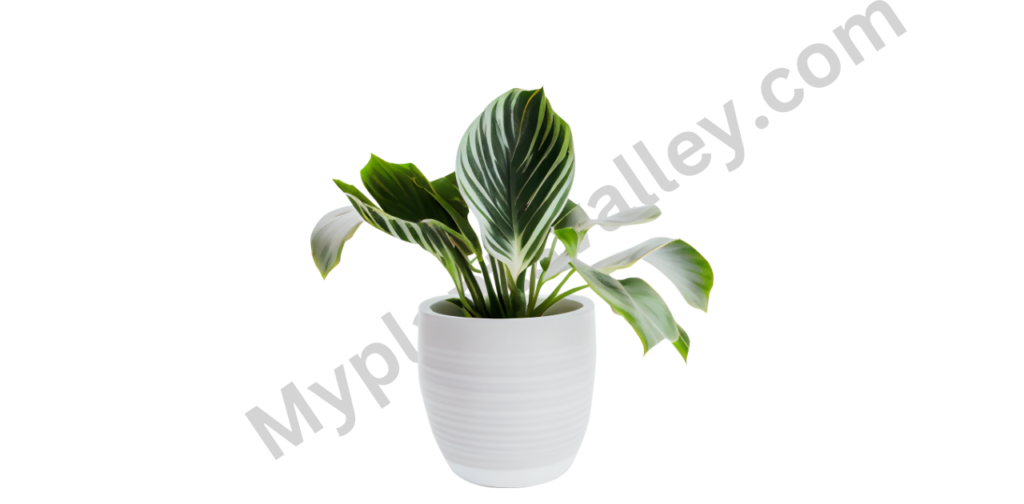
Yellowing Leaves
Yellowing leaves on your Calathea can be a sign of several issues, including overwatering, underwatering, or nutrient deficiencies:
- Overwatering: If the soil is consistently wet and the roots are waterlogged, the leaves may turn yellow and wilt. Allow the soil to dry out slightly between waterings and adjust your watering schedule accordingly.
- Underwatering: Calatheas prefer consistently moist soil. If the soil becomes too dry, the leaves may start to yellow and curl. Water your plant when the top inch of soil feels dry, ensuring thorough watering without letting it sit in water.
- Nutrient Deficiencies: Lack of essential nutrients, particularly nitrogen, can cause yellowing leaves. Feed your Calathea with a balanced fertilizer to provide the necessary nutrients for healthy foliage.
Browning Leaf Edges
Browning edges on Calathea leaves are often due to environmental factors or improper care:
- Low Humidity: Calatheas thrive in high humidity environments. Dry air can cause the leaf edges to brown. Increase humidity around your plant by misting it regularly, using a humidifier, or placing it on a pebble tray filled with water.
- Water Quality: Calatheas are sensitive to chemicals in tap water, such as chlorine and fluoride. Use distilled water or collect rainwater for watering to prevent leaf edge browning.
- Direct Sunlight: Exposure to direct sunlight can scorch Calathea leaves, causing them to develop brown edges. Place your plant in a location with bright, indirect light and shield it from direct sunlight.
Seasonal Care Tips
Winter Care
During the winter months, Calathea plants require special attention to thrive in cooler indoor conditions:
- Light: Place your Calathea in a bright location with indirect sunlight. Ensure it receives sufficient light, as winter days tend to be shorter and less sunny.
- Temperature: Calatheas prefer temperatures above 60°F (15°C) and are sensitive to cold drafts. Keep them away from windows, doors, and heating vents that can expose them to chilly drafts.
- Humidity: Indoor air tends to be drier in winter due to heating systems. Increase humidity around your Calathea by misting its leaves regularly, using a humidifier, or placing a humidity tray nearby.
- Watering: Adjust your watering schedule to accommodate the plant’s slower growth. Allow the top inch of soil to dry out slightly between waterings to prevent root rot.
- Avoid Overfeeding: Reduce or stop fertilizing your Calathea during the winter months when its growth slows down. Resume fertilizing in early spring as new growth appears.
Summer Care
In the warmer summer months, Calathea plants experience active growth and have different care needs:
- Light: Provide bright, indirect light for your Calathea. Avoid direct sunlight, as it can scorch the leaves and cause damage. Filter sunlight with sheer curtains or place the plant in a shaded area outdoors.
- Temperature: Calatheas thrive in temperatures between 65-75°F (18-24°C). Ensure the plant is not exposed to sudden temperature fluctuations or extreme heat, which can stress the plant.
- Watering: Increase watering frequency during summer to keep the soil consistently moist, but not waterlogged. Monitor the soil moisture regularly and adjust watering as needed based on environmental conditions.
- Humidity: Maintain high humidity levels around your Calathea, as dry air can cause leaf curling and browning. Regular misting, using a humidity tray, or grouping plants together can help increase humidity.
- Fertilizing: Feed your Calathea every 4-6 weeks with a balanced, water-soluble fertilizer diluted to half strength during the growing season. This helps provide essential nutrients for healthy growth and vibrant foliage.
Care for Pest Infestations
Common pests that may affect Calathea plants include spider mites, aphids, and mealybugs:
- Spider Mites: These tiny pests suck sap from the leaves, causing stippling and webbing. Use insecticidal soap or neem oil to treat spider mites, ensuring thorough coverage of both sides of the leaves.
- Aphids: Aphids feed on new growth and excrete honeydew, which attracts ants and promotes mold growth. Remove aphids by spraying the plant with a strong stream of water or treat with insecticidal soap.
- Mealybugs: Mealybugs appear as white, cottony masses on stems and leaf nodes. Remove them manually with a cotton swab dipped in rubbing alcohol, or use insecticidal soap for severe infestations.
Extra Care Tips for Proper Growing of Calathea Plants
Calatheas are known for their stunning foliage and unique characteristics, requiring specific care to thrive indoors. Here are additional tips to ensure your Calathea grows healthily:
- Consistent Moisture: Calatheas prefer consistently moist soil. Check the soil moisture regularly and water when the top inch feels dry. Avoid letting the soil dry out completely or become waterlogged, as both can stress the plant.
- Use Filtered Water: Calatheas are sensitive to chemicals in tap water, such as chlorine and fluoride, which can cause leaf browning. Use filtered, distilled, or rainwater to prevent potential damage to the leaves.
- Provide Adequate Humidity: Maintain high humidity levels, ideally between 50-60% or higher, around your Calathea. Increase humidity by misting the leaves daily, using a humidifier, or placing the plant on a humidity tray with water and pebbles.
- Avoid Cold Drafts: Calatheas are tropical plants and are sensitive to cold drafts. Keep them away from windows, doors, and air conditioning vents during the colder months to prevent stress and leaf damage.
- Regular Cleaning: Dust can accumulate on Calathea leaves, blocking sunlight and reducing the plant’s ability to photosynthesize. Wipe the leaves gently with a damp cloth or sponge periodically to keep them clean and healthy.
- Pruning and Maintenance: Remove yellow or brown leaves promptly to encourage new growth and maintain the plant’s appearance. Use clean, sharp scissors or pruning shears to make clean cuts at the base of the affected leaves.
- Monitor for Pests: Regularly inspect your Calathea for signs of pests such as spider mites, aphids, or mealybugs. If detected, treat promptly with insecticidal soap or neem oil to prevent infestations from spreading.
- Rotate the Plant: To ensure even growth and prevent the plant from leaning towards the light source, rotate your Calathea periodically. This helps promote balanced growth and keeps the foliage looking symmetrical.
FAQs
How do I know if my Calathea is healthy?
A healthy Calathea will have vibrant, upright leaves without any yellowing or browning edges. It should show signs of new growth during the growing season.
Can Calathea be grown outdoors?
Calathea can be grown outdoors in warm, humid climates with filtered light. However, they are typically better suited as indoor plants in most regions.
What pests commonly affect Calathea?
Common pests include spider mites, aphids, and mealybugs. Regularly inspecting your plant and treating any infestations promptly can keep these pests at bay.
How long does a Calathea plant live?
With proper care, a Calathea plant can live for several years. Regular maintenance and addressing any issues quickly can prolong its life.
Is Calathea safe for pets?
Yes
Conclusion
In conclusion, caring for a Calathea plant involves providing the right balance of light, water, humidity, and nutrients throughout the year. These tropical beauties not only enhance indoor spaces with their stunning foliage but also contribute to better air quality by purifying toxins. By understanding and meeting their specific needs—such as avoiding direct sunlight, maintaining high humidity, and using filtered water—you can ensure their health and longevity. With proper care, Calatheas will reward you with vibrant growth and striking patterns, making them a delightful addition to any plant enthusiast’s collection and a refreshing presence in your home.

